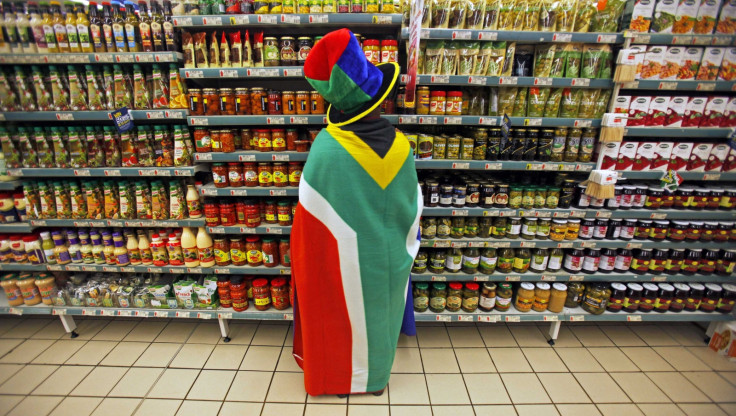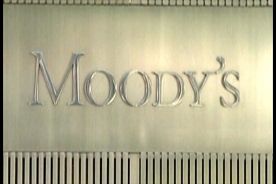South Africa Feeling Unloved by Foreign Investors and Generally Downgraded

What with seemingly endless energy shortages, simmering industrial unrest, and innumerable social challenges, South Africa increasingly appears to be a country in trouble.
Although the continent's second largest economy, and the one that still attracts the highest level of foreign direct investment, there are fears in some quarters that its star may be starting to wane – and will continue to do so unless swift action is taken.
For example, while South Africa may for years have boasted the largest GDP in Africa, it was knocked off its perch by Nigeria in April after a rebasing exercise, making the West African country more attractive to foreign investors overnight.
But the various gloomy perceptions about South Africa's future were not helped last week by Moody's decision to downgrade its credit rating to only two notches above junk status, continuing the steady fall from a 2009 high when the country boasted a top A3 rating.
Moody's took the decision as a result of the developing nation's deteriorating economic growth, an increasing budget and current account deficit and rising public debt levels (50% compared to 27% only five years ago).
These were caused, among other things, by rolling power outages, known locally as load shedding, apparently endless strikes in the all-important mining sector, and generally slow domestic and global demand.
Although the move to cut South Africa's investment grade status to Baa2 from Baa1 was not entirely unexpected following warnings in July, it has once again raised fears that a slide into junk status could be on the cards.
Similar concerns are also being raised over the country's five largest banks – Standard Bank of SA, Absa, FirstRand, Nedbank and Investec – after Moody's likewise downgraded their rating to Baa2 status on Tuesday.

The problem is that, because the banks have sizeable holdings of sovereign debt securities, the SA government's weakening credit profile is having an impact on their own perceived creditworthiness too.
But any shift to junk status would cost the country dear by triggering an automatic sell-off of its bonds by foreign institutional investors and resulting in new buyers charging higher interest rates in order to counterbalance higher levels of investment risk.
In real terms, this means that it would cost South Africa, and its private sector, significantly more to service their debts. It would also become harder to borrow money in order to fund much-needed projects such as infrastructure development. Other potential repercussions include a likely nose-dive in the value of the rand and a rise in inflation.
Credit downgrades
To make this situation a reality though, two out of the three credit rating agencies would have to make the move. But Standard & Poor's has already assigned South Africa a BBB- rating, the lowest grade before junk, while Fitch is expected to follow suit in December. This would mean that the country does not have much further to fall.
In South Africa's favour though, Moody's appears to have given its sovereign currency the benefit of the doubt. By shifting its outlook on the rating from negative to stable, the agency has made it clear that change is unlikely to occur any time soon.
On the downside, some analysts are predicting that if South Africa fails to sort out key issues such as weak tax receipts and sluggish exports fairly quickly, a downgrade could occur in as little as five years.
But David Knee, head of fixed income at financial services firm Prudential, believes that, when compared to other developing markets, South Africa is not in too bad a shape.
"It is clear that much hinges on economic growth over the medium-term", he says, adding that South Africa "could indeed be downgraded by the ratings agencies should GDP growth remain weaker than expected for an extended period of time".
But when "looking at the metrics of South Africa's peers", which include India and Brazil, Knee points out reassuringly that "the deterioration would likely have to be fairly significant to prompt ratings action".
One area that the country really does need to sort out sooner rather than later if it is to prevent such deterioration though is its energy sector.
To this end, the government pledged to inject at least ZAR 20 billion (£1.1 billion) in equity to help plug state-owned utility Eskom's funding gap at the close of last month - a move that saw both Standard & Poor's and Moody's hold off from downgrading its bonds to junk status, a seemingly a recurring theme here in South Africa at the moment.
Eskom needs the money not only to service the debt required to pay for completion of two new power stations vital to ease the country's chronic power shortages, but also to maintain its existing ageing estate.
Evidence of what happens if such action is not taken came only a few weeks ago, in fact, when a coal silo at the Majuba power station in Mpumalanga collapsed, leading to yet another series of rolling power blackouts across the country.

Reducing exposure
South Africa's iconic weekly documentary programme, Carte Blanche, attributed the collapse to non-existent maintenance following the introduction of incentivisation schemes that linked senior managers' bonuses to keeping expenditure levels low.
But Majuba is not expected to function at maximum capacity for another six months, making scheduled load shedding an ever-present threat to both business and the economy.
As a result of all this, organisations such as South Africa's second largest supermarket chain, Pick 'n Pay, have been working hard to reduce their exposure by finding ways to cut electricity consumption.
As David North, the retailer's group strategy and corporate affairs director, explains: "The objective of saving money motivates any business. South Africa is not immune to energy price hikes or electricity outages from load shedding. So when you get a combination of rapid increases in pricing and uneven supply, most companies will look at how they can reduce these challenges."
To date, the retailer has managed to slash its power usage by 30% per square metre against its 2008 store baseline simply by addressing lighting and refrigeration efficiency issues. Such action has saved it a total of ZAR 508 million on electricity (£28.6 million) since the project began.
In fact, last year alone the company's ZAR55 million (£3.1 million) investment in retrofitting lighting and refrigeration across 10% of its stores and two of its key distribution centres saved it a huge ZAR14.5 million (£814,949).
Measures taken included implementing less energy-intensive lighting systems, encouraging staff to turn lights off when no longer required as well as introducing motion sensors and key-switches to automatically put them out at night.
Moreover, all of the retailer's stores now have online electricity metering, which means that managers can monitor energy usage via a dashboard. It alerts them should a refrigeration unit suddenly start consuming more electricity than normal, for example, so that they can take immediate action.
But because 85% of Pick n' Pay's buildings-related carbon emissions are generated by electricity consumption, the move has likewise helped it slash carbon emissions by 19.4%, beating the target it set itself in 2010 of a 15% reduction by 2015.
The firm's efforts have, in fact, earned it an accolade from the Carbon Disclosure Project for being the top-performing retailer in Africa. Which just goes to show that every cloud truly does have a silver lining.
© Copyright IBTimes 2025. All rights reserved.




















